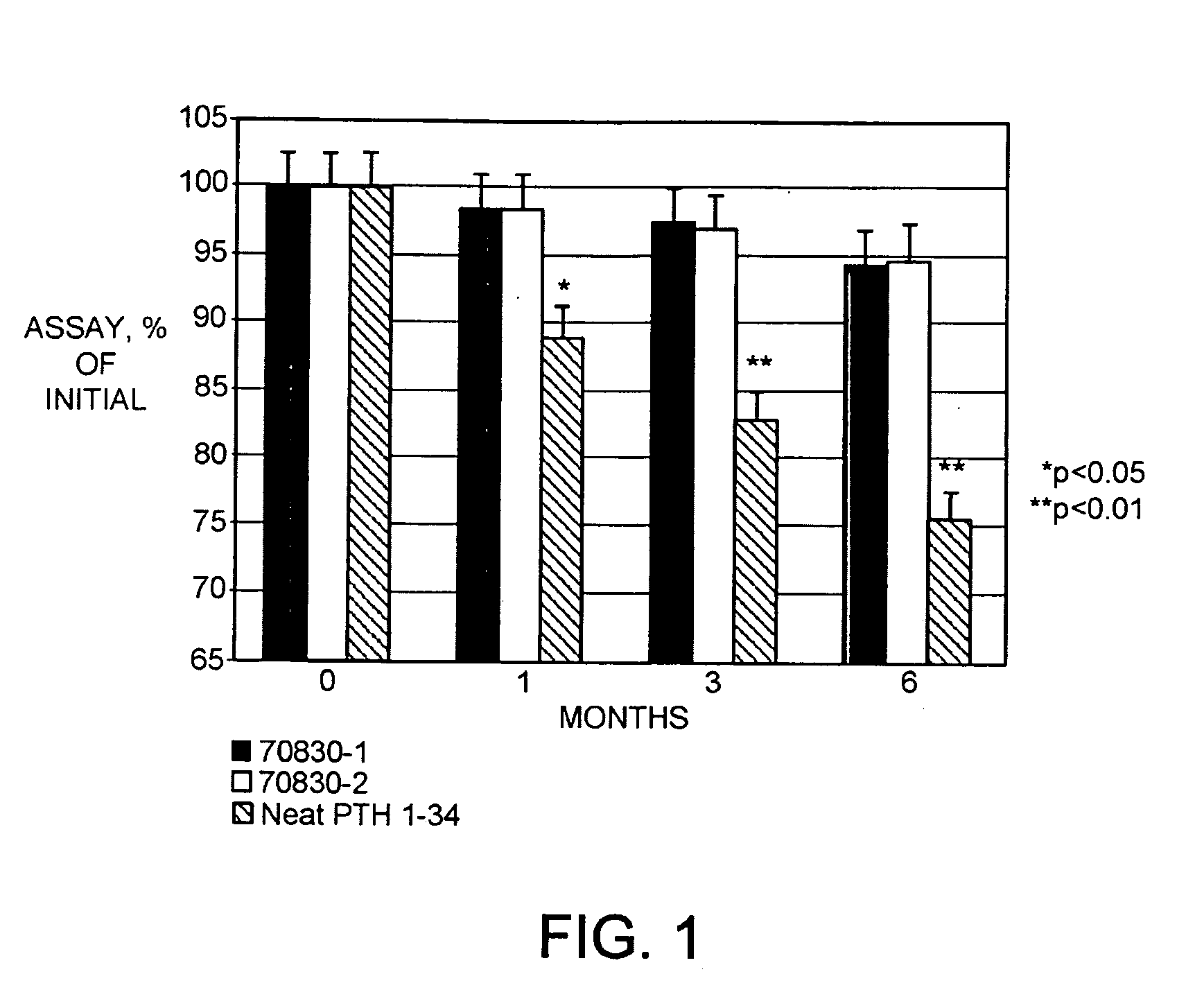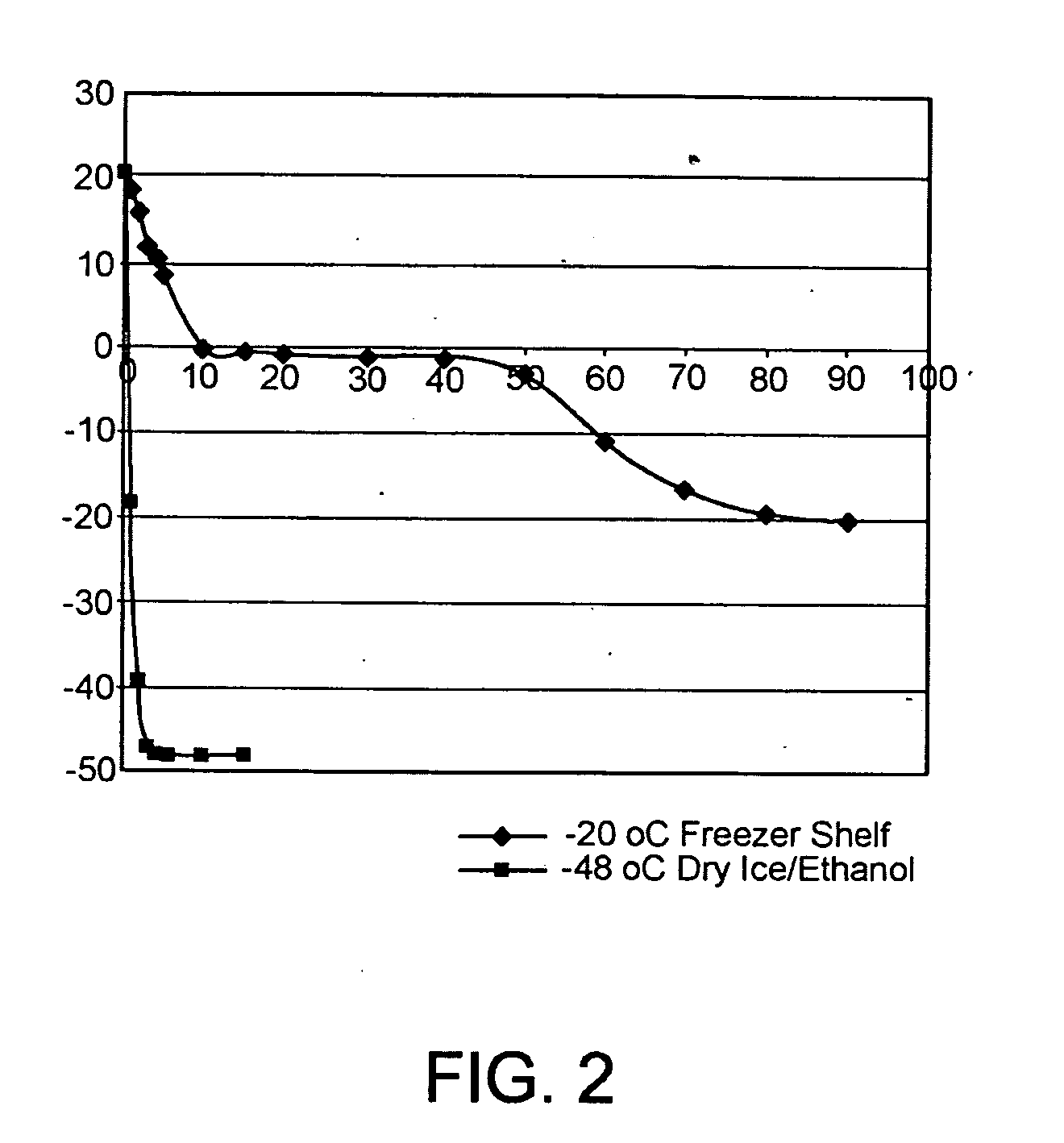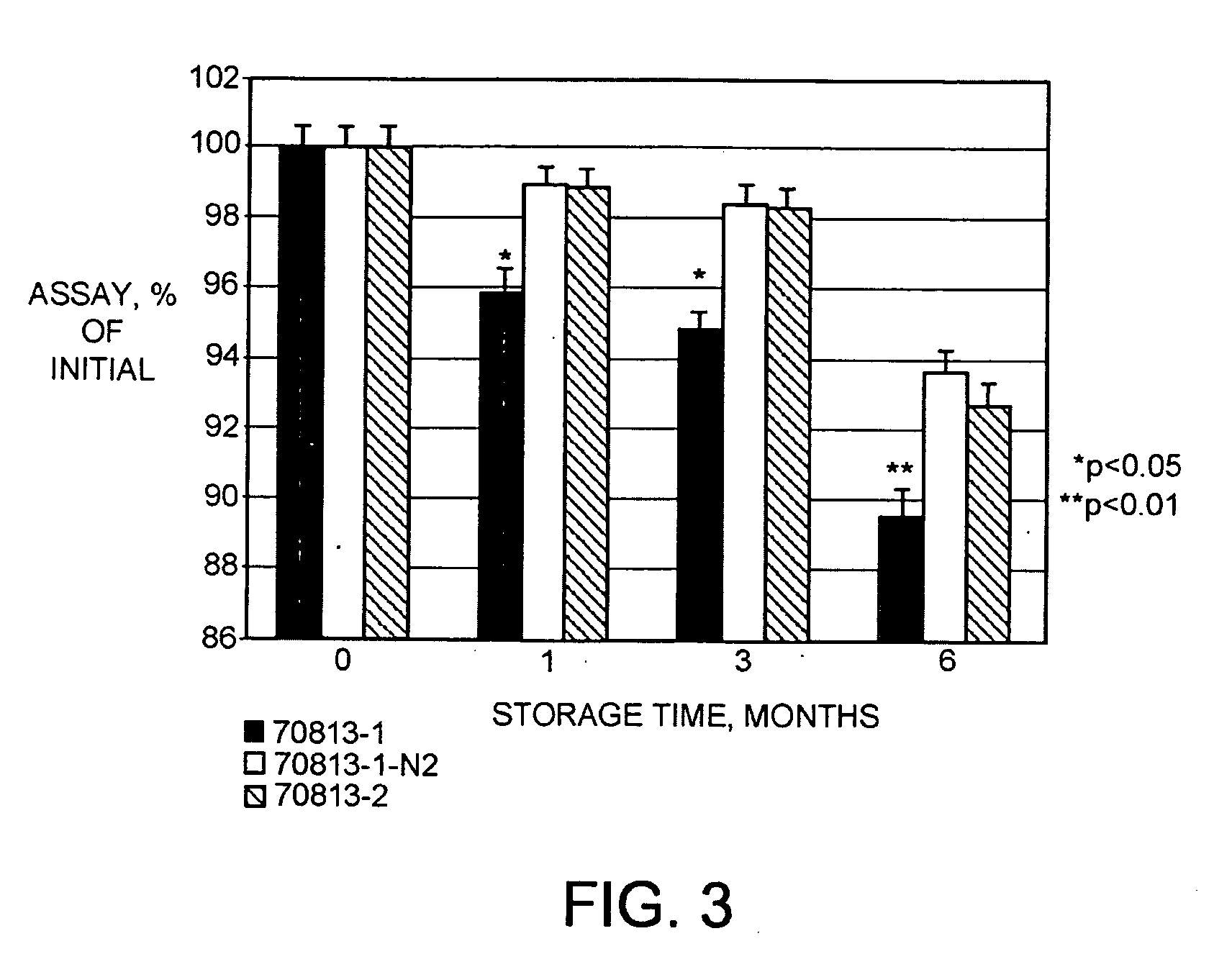Topical compositions comprising a macromolecule and methods of using same
- Summary
- Abstract
- Description
- Claims
- Application Information
AI Technical Summary
Benefits of technology
Problems solved by technology
Method used
Image
Examples
example 1
Physical and Chemical Stability
[0106]Physical stability (based on appearance and viscosity) and chemical stability (based on pH) were determined for the various vehicle formulations listed in Table 1.
TABLE 1Formulations for physical and chemical stability assessment.VolatileNon-volatileNon-volatileDiluentPolymersolventsolventsolventSurfactantBuffer,FormulationHEC, %Ethanol, %Glycerin, %PG, %BAC, %qs1001000citrate121.25010200citrate1302010200citrate141.25201000citrate150020200citrate161.2502000citrate170202000citrate181.252020200citrate1902010200benzoate100010100acetate1110010100.2benzoate120100100.2acetateHEC: HydroxyethylcellulosePG: Propylene glycolBAC: Benzalkonium chloride10.1% phenoxyethanol added as a preservative
[0107]In Table 1, Formulations 1-8 represent a fractional factorial design for: polymer (hydroxyethylcellulose or HEC), volatile solvent (ethanol), non-volatile solvent (glycerin), and another non-volatile solvent (propylene glycol or PG). Both glycerin and propylene ...
example 2
Evaluation of hPTH(1-34) Topical Compositions
[0114]The hPTH(1-34) formulations were made to assess their stability at refrigerated and accelerated conditions. The results of the stability study are shown in Table 4.
TABLE 4Constituents in the hPTH(1-34) formulations.123Component(Solution)(Gel)(Solution)PTH(1-34)0.5mg / g0.5mg / g0.5mg / gBenzalkonium0.2%w / w0.2%w / w0.2%w / wchloride1Propylene glycol——12.0%w / wHexylene glycol12.0%w / w12.0%w / w—Purified water21.6%w / w20.35%w / w6.6%w / wHydroxyethylcellulose—1.25%w / w—Glycerin——15.0%w / wCitrate buffer pH 4266.0%w / w66%w / w66%w / w1The stock solution was 50% w / w surfactant, so 0.4% w / w was added to give 0.2% w / w.2Contained 0.1% w / w phenoxyethanol
[0115]After preparing the formulations in Table 4, they were placed into glass vials and stored at 2-8 and 25° C. At specific time points, the assay for the amount of hPTH(1-34), in mg / g; the pH; and the appearance of the formulations were assessed. The results are summarized in Table 5.
TABLE 5Summary of stability data...
example 3
Dermal Delivery Studies
[0117]Two groups of hPTH(1-34) formulations described below in Tables 6 and 7 were prepared for two screening studies (Screening Study 1 and Screening Study 2, respectively). In each study, the formulations described were applied topically to SKH-1 hairless mice for five days a week for two weeks in order to evaluate their pharmacological response. A vehicle control group was used for comparison purposes. The dosing volume for the hPTH(1-34) formulations was 0.05 mL, and the concentration was 0.05 mg / mL. At the end of each study, the mice were sacrificed and their skin was harvested, imbedded in paraffin, and sectioned. The skin sections were evaluated for epidermal thickness and the keratinocyte proliferation was compared to the control. The results are shown in Tables 6 and 7. All percentages are weight percentages of the formulation.
TABLE 6Results for Screening Study 1Change in KeratinocyteProliferation ComparedFormulationCompositionto ControlControlCream c...
PUM
| Property | Measurement | Unit |
|---|---|---|
| Fraction | aaaaa | aaaaa |
| Mass | aaaaa | aaaaa |
| Mass | aaaaa | aaaaa |
Abstract
Description
Claims
Application Information
 Login to View More
Login to View More - R&D
- Intellectual Property
- Life Sciences
- Materials
- Tech Scout
- Unparalleled Data Quality
- Higher Quality Content
- 60% Fewer Hallucinations
Browse by: Latest US Patents, China's latest patents, Technical Efficacy Thesaurus, Application Domain, Technology Topic, Popular Technical Reports.
© 2025 PatSnap. All rights reserved.Legal|Privacy policy|Modern Slavery Act Transparency Statement|Sitemap|About US| Contact US: help@patsnap.com



